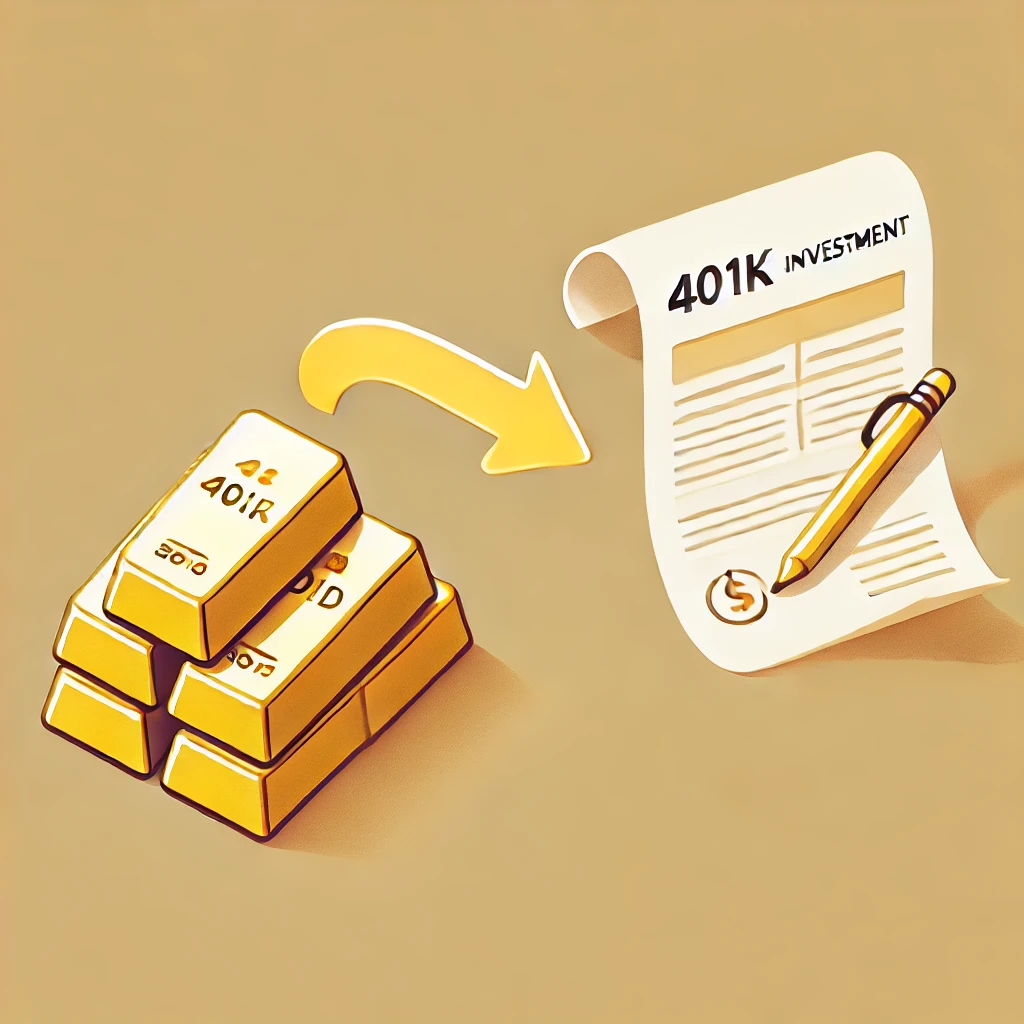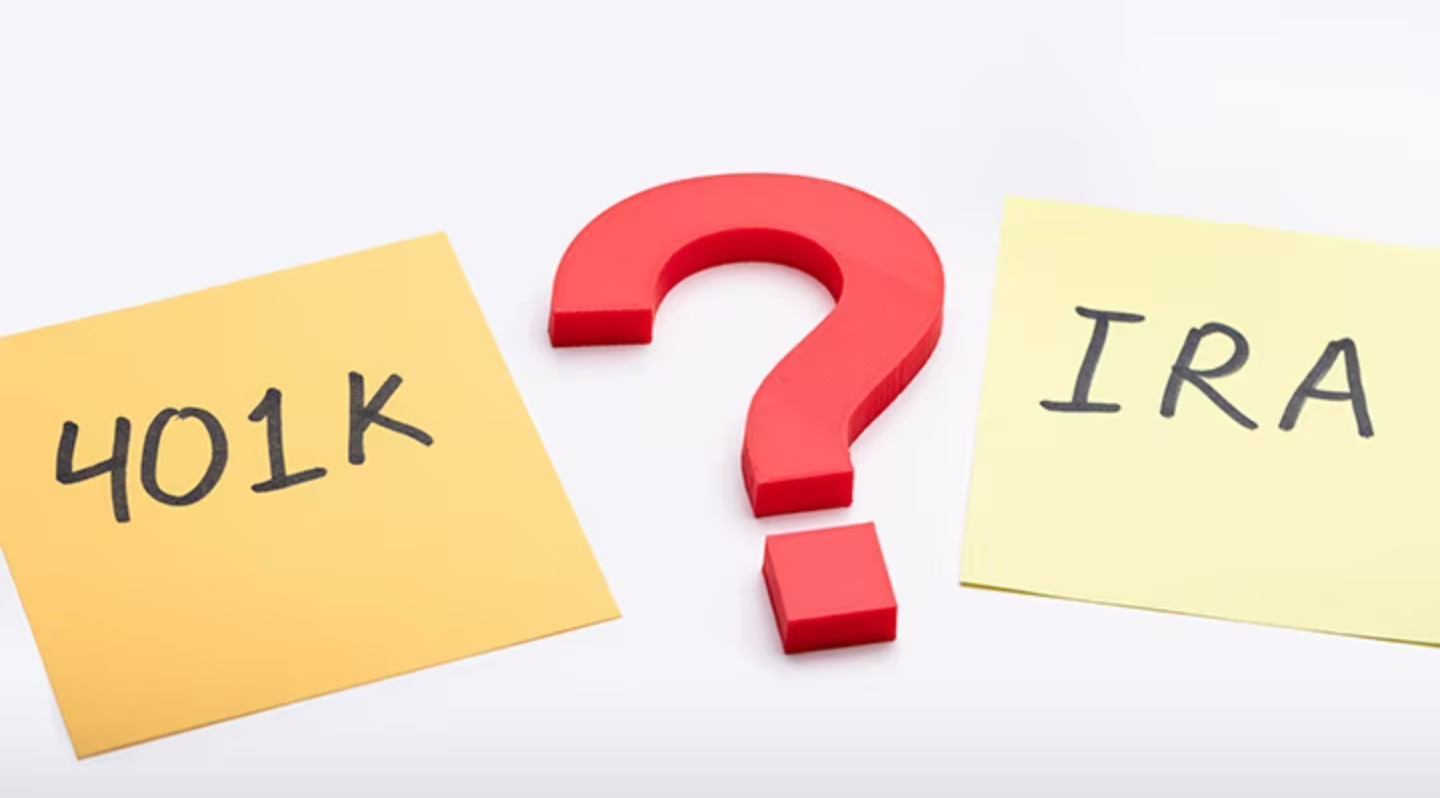How to Move 401k to Gold Without Penalty: A Complete Guide
In the ever-changing landscape of retirement planning, moving a 401k to gold is gaining traction as a strategic move. This article explores the benefits of gold investments, such as hedging against inflation, diversification, and long-term growth. Understand the limitations of traditional 401k plans and the advantages of self-directed IRAs. Learn the steps to move your 401k to gold without penalties, the types of rollovers, and the tax benefits associated with gold investments.
Abhinil Kumar
Author

Introduction: Exploring the Shift from 401k to Gold
In the ever-changing landscape of retirement planning, there are various investment options available for individuals to consider. One such option is the 401k, a popular retirement savings plan offered by many employers. However, in recent years, a growing number of individuals are looking beyond traditional investments and considering the benefits of moving their 401k funds into gold. This alternative investment strategy aims to leverage the stability and long-term growth potential of gold to secure a more secure and diversified retirement portfolio. In this article, we will explore the advantages of moving a 401k to gold and shed light on how this approach can offer financial security and protection against market volatility.
Benefits of Moving a 401k to Gold:
- Hedge against Inflation: Gold has long been considered a safe-haven asset that can act as a hedge against inflation. When financial markets experience downturns or currency values erode, the price of gold tends to rise. By moving a 401k to gold, investors can protect the purchasing power of their retirement savings and ensure that it keeps pace with the rising cost of living.
- Diversification and Risk Reduction: One of the primary benefits of moving a 401k to gold is the enhanced diversification it offers to a retirement portfolio. Diversifying investments across various asset classes, such as stocks, bonds, and precious metals like gold, can help reduce overall volatility and mitigate risk. Including gold in a retirement portfolio can help offset potential losses in other asset classes during economic crises or market downturns.
- Potential for Long-Term Growth: Gold has demonstrated its ability to grow in value over the long run. It is an asset that has consistently shown stability and resilience amidst market uncertainties and geopolitical tensions. By moving a 401k to gold, investors can position themselves to benefit from potential long-term growth and capitalize on the increasing demand for this precious metal.
Understanding 401k Plans and Their Limitations
A 401k plan is a retirement savings account offered by employers, allowing employees to save and invest a portion of their paycheck before taxes are taken out. Contributions grow tax-deferred until withdrawal, typically at retirement.
Common Limitations
Despite their popularity, 401k plans have several limitations:
- Limited Investment Options: Usually restricted to mutual funds, stocks, and bonds.
- Market Volatility: Heavily impacted by stock market fluctuations.
- Employer Dependency: The performance of the fund often depends on employer-selected investment options.
Understanding Self-Directed IRAs
A self-directed IRA is a retirement account that gives individuals more control over their investments compared to traditional IRAs. While traditional IRAs typically limit investment options to stocks, bonds, and mutual funds, self-directed IRAs offer the flexibility to invest in alternative assets such as real estate, private companies, precious metals, and more. This flexibility opens up a world of opportunities for savvy investors looking to diversify their portfolios.
Advantages:
- One of the major advantages of self-directed IRAs is the potential for higher returns. By investing in alternative assets, individuals have the chance to tap into lucrative markets that may outperform traditional investment options. Real estate, for example, has the potential for significant appreciation and rental income, which can lead to attractive returns. Additionally, investing in what you know can also be advantageous. If you have expertise or knowledge in a particular industry or market, you can leverage that knowledge to make informed investment decisions.
- Diversification is another key advantage of self-directed IRAs. By investing in multiple asset classes, individuals can spread their risk and protect themselves from market volatility. Alternative assets generally have a low correlation to traditional investments, meaning their performance is not directly tied to the stock market. This diversity can provide a level of stability during economic downturns when traditional investments may be in decline.
- Self-directed IRAs offer the concept of checkbook control. This means that investors have immediate access to their IRA funds, allowing for timely investment decisions and eliminating administrative delays. With checkbook control, individuals can make purchases or investments directly from their IRA, providing a seamless and efficient approach to managing their retirement funds.
Types of Rollovers
Rollovers are a common practice in financial planning, allowing individuals to transfer funds from one retirement account to another without incurring tax penalties. There are several types of rollovers, including direct rollovers, indirect rollovers, and 60-day rollovers, each with its own unique features and differences.
Direct Rollover vs. Indirect Rollover
- Direct Rollover: Direct rollovers involve the transfer of retirement funds from one qualified plan to another, such as from an employer-sponsored 401(k) to an Individual Retirement Account (IRA). This type of rollover is accomplished by instructing the custodian of the original account to directly transfer the funds to the custodian of the new account. Direct rollovers are typically not subject to tax withholding or penalties.
- Indirect Rollover: Indirect rollovers involve the account owner receiving the funds from the original account and then personally depositing them into the new account within a specified timeframe. With an indirect rollover, the account owner has 60 days to deposit the funds into the new account to avoid tax penalties. However, the IRS only allows one indirect rollover annually for each IRA account.

Steps to Move 401k to Gold Without Penalty
How to Move 401k to Gold Without Penalty
Moving a 401k to gold can be a strategic way to diversify your retirement portfolio and protect against market volatility. Here’s a detailed step-by-step guide to help you through the process without incurring penalties:
Setting Up a Self-Directed IRA
- Choose a Reputable Custodian:
- Research and Select: Begin by researching custodians who specialize in self-directed IRAs (SDIRAs) that allow gold investments. Look for firms with strong reputations, good customer reviews, and transparent fee structures.
Some examples of well-known custodians include:
- Equity Trust: Known for their extensive experience and excellent customer service in handling SDIRAs.
- GoldStar Trust Company: Offers a wide range of precious metal investment options and has a solid reputation.
- New Direction Trust Company: Provides comprehensive resources and support for gold investments in SDIRAs.
- Entrust Group: Specializes in SDIRAs and offers personalized service and transparent fees.
- Verify Credentials: Ensure the custodian is approved by the IRS and is experienced in handling gold IRAs. This ensures compliance with regulations and smooth processing of your investments.
- Initial Consultation: Schedule a consultation with a potential custodian to discuss your investment goals, understand the services they offer, and clarify any doubts. This step is crucial to ensure that the custodian aligns with your needs and can provide the support you require for your self-directed IRA investments.
- Research and Select: Begin by researching custodians who specialize in self-directed IRAs (SDIRAs) that allow gold investments. Look for firms with strong reputations, good customer reviews, and transparent fee structures.
Some examples of well-known custodians include:
- Open the Account:
- Complete the Paperwork: Once you have chosen a custodian, you will need to fill out the necessary paperwork to open your SDIRA. This includes providing personal information, selecting the type of account, and designating beneficiaries.
- Review Terms and Conditions: Carefully read through the account terms and conditions. This step is crucial to understand your responsibilities and the custodian’s policies.
- Account Setup: After submitting your paperwork, the custodian will set up your account. This process may take a few days to a couple of weeks, depending on the custodian.
- Fund the Account:
- Transfer Funds: You can fund your SDIRA by transferring funds from your existing 401k. This can be done through a rollover, which we will explain in the next section.
- Verify Transfer: Ensure that the funds are transferred directly from your 401k to the SDIRA to avoid penalties and taxes. The custodian will guide you through this process.
Rollover Process
- Initiate the Rollover:
- Contact Your 401k Provider: Contact your current 401k provider and inform them of your intention to roll over your funds into a self-directed IRA. They will provide you with the necessary forms and instructions.
- Complete Rollover Forms: Fill out the required rollover forms provided by your 401k administrator. These forms authorize the transfer of funds from your 401k to the new SDIRA.
- Select Your Gold Investments:
- IRS Requirements: The IRS has specific requirements for gold investments in an IRA. The gold must be in the form of bullion or coins that meet certain purity standards (e.g., 99.5% pure for gold bars).
- Types of Gold:
- Bullion: Gold bars and ingots.
- Coins: IRS-approved coins such as American Gold Eagles, Canadian Gold Maple Leafs, and Australian Gold Kangaroos.
- Purchase Process: Work with your SDIRA custodian to purchase the gold. The custodian will use the funds in your account to buy the gold and arrange for it to be stored in an approved depository.
- Storage: The gold must be stored in an IRS-approved depository to maintain the tax-advantaged status of your IRA. You cannot take physical possession of the gold.
Tax Benefits of Investing in Gold
Investing in gold not only provides a sense of security but also offers several tax benefits. First and foremost, one of the key tax advantages of investing in gold is the ability to defer taxes on any gains until retirement. Unlike other investments, gold does not generate taxable income until it is sold or redeemed. This means that investors can enjoy the growth of their gold investments without worrying about current tax liabilities.
Moreover, investing in gold allows for tax-free growth of investments. Any increase in the value of gold over time is not subject to capital gains tax until the gold is sold. This tax advantage can be immensely beneficial, especially for long-term investors who want to maximize their returns.
Additionally, by contributing to a traditional Individual Retirement Account (IRA), investors can potentially reduce their taxable income and enjoy the benefits of tax-free growth. Traditional IRAs allow individuals to make tax-deductible contributions, which means that any amount contributed to the IRA reduces the investor’s taxable income for that year. This reduction in taxable income can result in a lower tax bill and potentially increase an individual’s eligibility for other tax deductions and credits.
Why Consider Gold Investments?
Gold investments should be considered for several reasons and benefits.
- Firstly, gold has a long history as a valuable asset, making it a reliable and trusted investment option. Its historical value dates back centuries, and it has always been prized for its scarcity and beauty. This track record makes gold a safe store of wealth and a valuable addition to any investment portfolio.
- Secondly, gold serves as a hedge against inflation. When inflation rises, the value of paper currency tends to decline. However, gold is not affected by inflation in the same way. In fact, during periods of high inflation, gold often increases in value. This makes it an ideal investment for preserving purchasing power and protecting against the erosion of wealth caused by inflation.
- Additionally, gold serves as a hedge against economic uncertainties. During times of economic downturns or geopolitical tensions, investors tend to flock to gold as a safe haven. Its value tends to rise when stock markets or currencies experience volatility or uncertainty. By including gold in an investment portfolio, investors can protect their wealth and mitigate their exposure to economic risks.
- Finally, gold offers diversification potential. It has a low correlation with other asset classes, such as stocks and bonds. This means that when other investments decline, gold may hold its value or even appreciate. By diversifying their portfolio with gold, investors can reduce the overall risk and increase the likelihood of positive returns.
Conclusion
Moving your 401k to gold without penalty is a strategic way to diversify your retirement portfolio and protect against market volatility. By choosing reputable gold investments, such as gold bullion or gold coins, you can take advantage of the stability and long-term growth potential that physical gold offers. Setting up a self-directed IRA with a reliable custodian allows you to include physical gold assets like gold bars or gold products in your retirement plan. This approach not only provides financial security but also offers significant tax advantages, such as tax-deferred growth and potential tax deductions. Ensuring excellent customer service and smooth rollover processes with your chosen custodian can enhance the overall experience, making the transition to gold investments seamless and efficient. With the increasing inflation rate and economic instability, diversifying your retirement portfolio with gold is a prudent and effective strategy.
FAQs
1. What are the benefits of moving a 401k to gold?
Moving a 401k to gold offers several benefits, including:
- Hedge against inflation: Gold bullion and gold bars tend to increase in value when inflation rates rise, preserving your purchasing power.
- Diversification: Including gold coins and other physical gold products in your retirement portfolio can reduce overall volatility and risk.
- Long-term growth: Gold has historically shown resilience and growth, even during economic instability.
2. How do I set up a self-directed IRA for gold investments?
To set up a self-directed IRA:
- Choose a reputable custodian: Select a custodian known for excellent customer service and expertise in self-directed IRA accounts and gold investments.
- Open the account: Complete the necessary paperwork to establish your self-directed IRA.
- Fund the account: Transfer funds from your existing 401k into your new self-directed IRA through a direct transfer to avoid penalties.
3. What is the difference between a direct rollover and an indirect rollover?
- Direct rollover: Funds are transferred directly from your 401k to your self-directed IRA without you taking possession of the money, avoiding any taxable income and penalties.
- Indirect rollover: You receive the funds from your 401k and must deposit them into your self-directed IRA within 60 days. Failure to do so can result in taxable income and penalties.
4. Are there tax advantages to investing in gold through a self-directed IRA?
Yes, investing in gold through a self-directed IRA offers several tax benefits:
- Tax-deferred growth: Gains from gold investments within an IRA are not taxed until you take distributions.
- Potential for tax deductions: Contributions to a traditional self-directed IRA may reduce your taxable income, leading to tax savings.
5. What types of gold investments are allowed in a self-directed IRA?
The IRS allows the following types of gold investments in a self-directed IRA:
- Gold bullion: Must meet minimum fineness requirements.
- Gold coins: Certain coins like American Hartford Gold and Augusta Precious Metals are permitted.
- Gold bars: Must be produced by approved refiners and meet specific purity standards.


